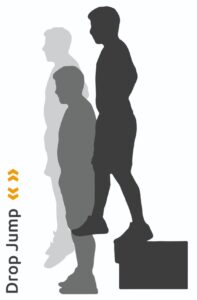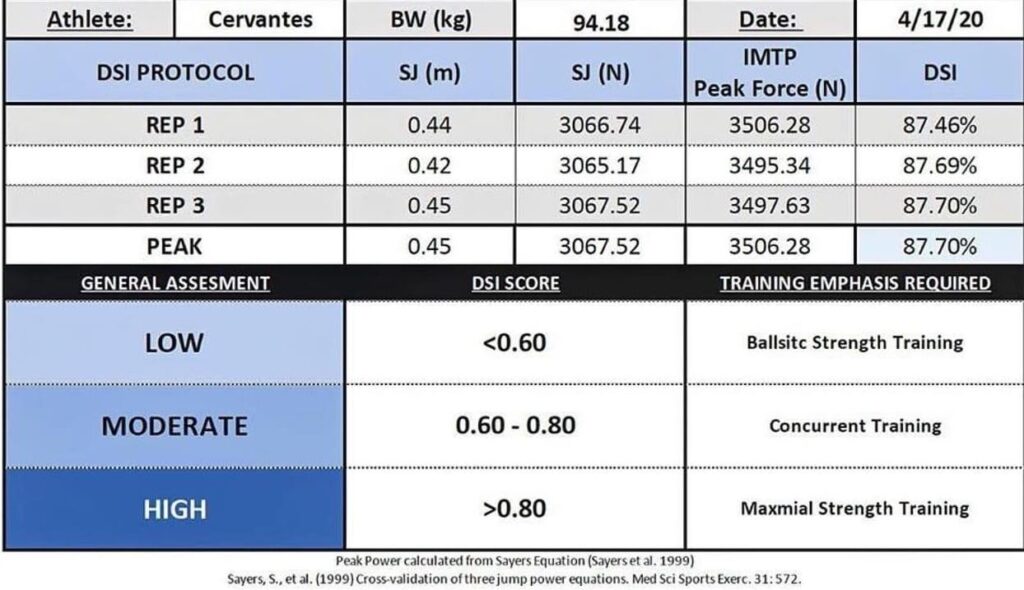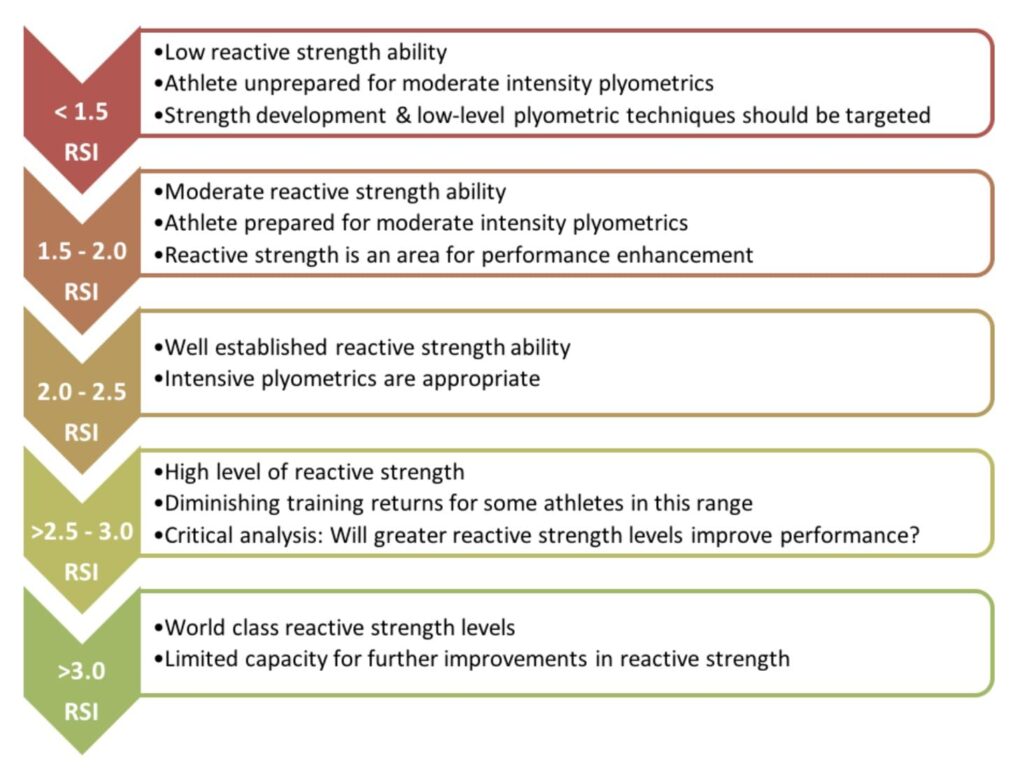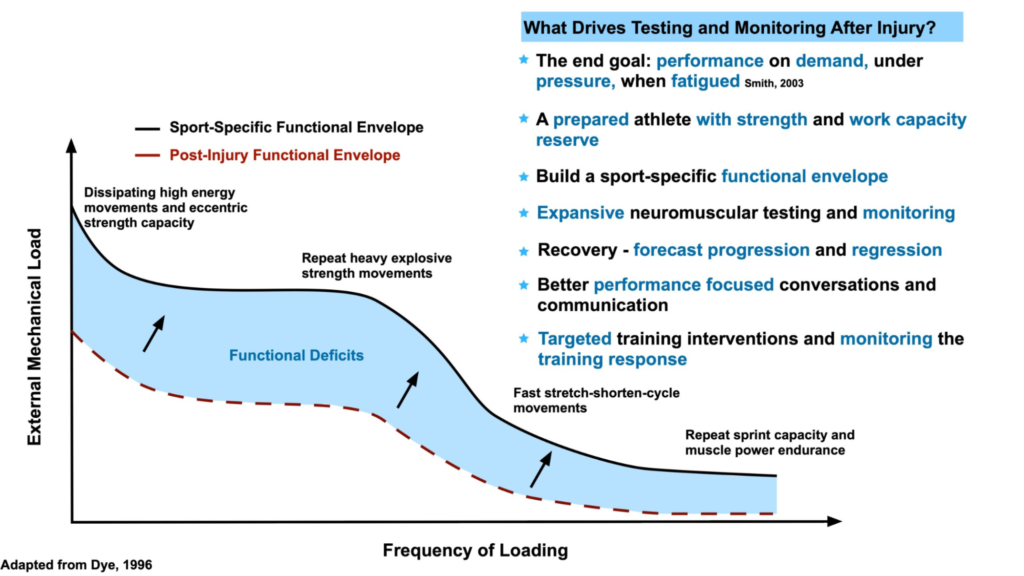Assesments
From force plate jumps to isometric pulls, we collect hundreds of validated data points and benchmark them against sport specific literature, pinpointing exactly where you stand and what to improve.
Performance
NÃO APAGAR
The IMTP is considered the gold standard test, scientifically validated and used by the top sports clubs and leagues worldwide to assess maximum strength and the rate of force development (RFD). RFD reflects the time required to generate force; the shorter the time, the greater the athlete’s efficiency. These measurements are essential for identifying real athletic potential, something that is only possible with cutting-edge equipment such as the force platform.
An elderly person with low strength and power is up to seven times more likely to suffer falls.
🏋️♂️Imagine two boxers, A and B. If athlete A has a higher RFD than athlete B, he can deliver punches faster and with more power, giving his opponent less reaction time. This detail can be decisive in a fight—a precise punch before the opponent has a chance to defend.🥊
🍣Juliana always wanted to dine at an authentic Japanese restaurant, but knee pain made this experience impossible. When we performed the IMTP test, we discovered that her leg strength was 30% below the recommended level for her age. After a personalized strengthening program, she was not only able to stand up effortlessly but also eliminated the pain that had been limiting her life. Today, she enjoys traveling, plays with her children, and has mobility she never imagined recovering.
Below is a figure showing various scientific studies that demonstrate a very high correlation (above 0.90 significance) between the IMTP test and different physical tests, as well as its specificity to sports.


The CMJ evaluates your vertical jump power and neuromuscular efficiency. Below-expected results may indicate a lack of explosiveness (power), limiting the ability to generate force quickly—crucial in sports like basketball or volleyball, but equally important for preventing falls in the elderly. A higher CMJ score represents greater power and more agile movements for athletes, while for older individuals, it contributes to faster recovery after a stumble, preventing falls. Even in sports that do not necessarily require jumping (such as tennis, martial arts, etc.), this test is valuable because it measures muscle power, neuromuscular fitness, and elastic strength.
Below is a graph obtained after a Countermovement Jump (CMJ) test. Each of these jump phases (Unweighting, Braking, Propulsion, Flight, and Landing) provides a vast amount of information, including jump height, peak force, rate of force development, total power generated, average power, relative power, peak power, propulsion, right-left asymmetry, and many others. Each of these phases will generate dozens of metrics that must be carefully interpreted by an experienced and trained professional.
🏐 Suppose a volleyball player is looking to improve their attack reach at the net. By frequently performing the CMJ test, they obtain data on their jumping ability and muscle explosiveness. If the results indicate a gradual increase in vertical jump height, it means that strength and power training at the gym and on the court is being effective. On the other hand, if there is a decline in CMJ performance, it may signal fatigue or the need to adjust training (for example, including more strength exercises, altering loads, or better periodizing training). In this way, the CMJ serves as a “thermometer” for the athlete’s power development.
💥 Imagine an adult who does not participate in competitive sports but wants to improve physical fitness and avoid injuries in daily life. By evaluating the CMJ, they can determine how efficiently they generate force quickly—something essential for climbing stairs more easily, carrying groceries, or reacting to a possible misstep. If CMJ test results indicate low lower-body power, this person can focus on strength training and explosive exercises to ensure more stability in daily activities and, most importantly, to reduce the risk of falls.

The Squat Jump assesses the power generated exclusively by the muscular system, without the elastic reflex (SSC) present in the CMJ. For this reason, it provides a purer measure of initial force, essential in sports that require quick movements, such as sprints and explosive starts. Low results may indicate specific muscle deficiencies, compromising performance. Detecting these deficits allows for personalized training to develop explosiveness more efficiently.
🚀 Maria notices that when climbing stairs or taking quick steps, she feels excessive leg fatigue. The Squat Jump reveals a lack of muscle power. Guided by a professional, she begins specific strength exercises, and within a few weeks, she is able to climb stairs more easily, experiencing greater energy and endurance in her daily life.

The Drop Jump is a test that evaluates reactive strength and muscle elasticity in the Stretch-Shortening Cycle (SSC). It measures how efficiently the body converts potential energy into elastic and kinetic energy, producing explosive movements. An unsatisfactory result may indicate a higher risk of injury and a decline in performance in high-intensity activities, such as running or jumping, as it reveals deficiencies in the ability to react quickly to ground contact. By diagnosing these weak points, it is possible to adjust training to enhance power, ensuring greater efficiency and safety in movements.
⚽ Imagine a player who needs to change direction within fractions of a second to dribble opponents or escape tight marking. If the Drop Jump test shows that they do not efficiently utilize elastic energy, it means they are losing efficiency in explosive movements. Based on this data, it is recommended to include specific reactive strength exercises so that the athlete gains agility and speed on the field, while also reducing the risk of overload-related injuries.
🏃♀️ Ana loves running on weekends, but she started experiencing knee pain as she intensified her training. The Drop Jump test reveals deficiencies in the ability to absorb and generate force quickly, indicating poor impact absorption by the muscles, which overloads the joints and signifies a high risk of joint stress. With a personalized strengthening program based on the test results, Ana corrects these imbalances, preventing injuries and allowing her to run with more confidence, comfort, and improved performance.
The CMPU is an upper-body power assessment, analogous to the CMJ. During the test, we analyze your ability to generate force rapidly in the arms, measuring factors such as rate of force development (RFD), peak force, among various other metrics.
Below-expected results in the CMPU may indicate low power, which can compromise performance in sports that require intense upper-body movements (martial arts, baseball, basketball, volleyball, etc.) and even in daily activities involving lifting or moving objects. For older individuals or those undergoing rehabilitation, this test helps detect asymmetries or functional deficits in the upper limbs, preventing injuries and improving autonomy.
🥋 A judoka who needs to execute throws like O Soto Gari will rely on a quick upper-body explosion to unbalance the opponent. If the CMPU reveals an insufficient rate of force development, this fighter may adjust their training routine to strengthen the upper body and improve strike explosiveness, reducing injury risk and increasing efficiency on the tatami.
💪 Márcia, 50 years old, experiences shoulder pain when lifting boxes to place them on top of her wardrobe. The CMPU assessment showed that her upper-body strength and power were below the recommended levels, indicating weaknesses that overloaded her joints. Under professional guidance, she was prescribed specific strengthening exercises, allowing her to regain the ability to lift and move objects without pain, safely performing daily tasks with comfort and confidence.
This test evaluates the efficiency of elastic strength during explosive movements. A low elastic coefficient can result in poor sports performance, unnecessary energy expenditure, and an increased risk of injuries. By measuring and optimizing your elastic strength, we help you become more efficient in your sport, maximize muscle power, and ultimately achieve better performance.
🏉 Imagine a rugby player who needs to execute an explosive tackle to take down an opponent. If the EEUR is low, it means that part of the energy produced during the eccentric phase is wasted. By working to improve this efficiency, the player gains more impact explosiveness and enhances performance on the field, while also reducing the risk of overload-related injuries.
🏃♂️ Carlos, 40 years old, enjoys running in the park and is preparing for a 10 km race. He notices excessive fatigue on uphill sections and experiences calf pain after training. The EEUR test reveals that the elastic strength in his legs is inefficient, resulting in greater fatigue and a higher risk of inflammation due to overuse. With specific strengthening exercises and proper running techniques, he learns to use his elastic energy more efficiently, reducing fatigue on inclines and joint discomfort, ensuring better performance with a lower risk of injury.
The DSI is an advanced metric that correlates the result of the Countermovement Jump (CMJ )— an indicator of power—with the Isometric Mid-Thigh Pull (IMTP) — the gold-standard test for maximum strength.
- DSI < 0.6: Indicates low power; prioritizing explosive training is recommended.
- 0.6 ≤ DSI ≤ 0.8: Suggests a balance between strength and power; maintain harmonized training.
- DSI > 0.8: Indicates a maximum strength deficit; focusing on strength development is essential.
By understanding your DSI, a professional can tailor exercises and intensities in a personalized manner, optimizing results and reducing the risk of injuries caused by overload or weakness.

🤼 A wrestling athlete who is extremely strong but struggles to execute a takedown quickly. A low DSI (< 0.80) would indicate that he has sufficient strength (high IMTP) but is not converting that strength into power. In this case, the training focus should be on speed and power exercises (plyometrics, ballistic exercises, etc.), allowing him to increase his DSI and perform faster and more effective takedowns.
🏋️♀️ Joana, 42 years old, has been practicing weight training for seven years but feels “slow” when climbing stairs or getting up quickly. Her DSI results show that, despite having good maximum strength (IMTP), her ability to generate explosiveness (CMJ) is below expectations. As a result, Joana’s training starts to include explosive exercises, helping her gain agility in daily tasks and reduce joint overload—ensuring more energy and safety in everyday activities.
The RSI (Reactive Strength Index) measures your ability to quickly alternate between force absorption and production, an essential component in sports that involve jumping, dribbling, and sudden changes of direction. A low RSI indicates slower reaction speed and a higher risk of overload, directly impacting competitiveness and movement safety. By monitoring this index, it is possible to adjust training to improve reactivity and agility, which are crucial factors for both sports performance and injury prevention.
In addition to everything mentioned above, RSI is also an excellent indicator of fatigue. If the values fall below normal, it may be a sign that you need rest.

🏀 Imagine a basketball player in the final seconds of a decisive game. He needs to dribble past his defender and find space to take a shot. If his RSI is low, his movements will be slow and predictable, and he will lose the opportunity to decide the game. Now, imagine if his RSI is high: he executes quick direction changes, surprises the defense, and secures the game-winning basket. In high-level sports, milliseconds make the difference between victory and defeat. We measure your RSI to ensure you have the edge when it matters most.
💃 Evelyn enjoys dance fitness classes but notices that she lacks the same agility as the rest of the group when performing jumps and quick direction changes. After evaluating her RSI, it was determined that her ability to absorb and generate force quickly was below the recommended level for her age. With the inclusion of specific plyometric and strengthening exercises, Ana improved her RSI in just a few weeks, feeling more agile, less prone to knee pain, and much more confident in her dance moves.
📊 Real case: A soccer player with low lower-body power improved by 18% in IMTP and 15% in RSI after a personalized training program, resulting in greater acceleration during sprints and more agile direction changes in games. This improvement earned him a starting position instead of being a substitute.
Injury Prevention
NÃO APAGAR
Infrared thermography detects overload, inflammation, and potential injury risk areas early, allowing for quick and effective interventions. Without this analysis, small imbalances or inflammations can worsen, leading to serious injuries. With thermography, you stay ahead of injuries, minimizing the chances of being sidelined from sports or work-related activities.
Additionally, thermography is a valuable tool for monitoring treatment progress, aiding in more precise decision-making and ensuring a safe return to sports or daily activities.
Thermography has an accuracy of:
✅ 97% compared to MRI
✅ 87% compared to CT scans
✅ 80% compared to myelography
📌 Note: Thermography is not a medical diagnosis, but it assists your doctor or physical therapist in making a diagnosis.
Through the force plate and HDD, it is possible to detect strength imbalances between the legs (or between the arms, in the case of CMPU), which is essential for injury prevention and performance optimization. In patients who have undergone knee surgeries, for example, it is common for the healthy leg to become overloaded, increasing the risk of new issues. Similarly, sports that predominantly use one side of the body can create significant muscular imbalances. By identifying and correcting these asymmetries, we can restore strength balance, improve performance, prevent back pain, and avoid postural problems resulting from compensations.
🔸 A patient who underwent ACL surgery with a quadriceps strength asymmetry greater than 15% between the operated and non-operated leg is up to 4.5 times more likely to require another surgery.
🔸 An asymmetry of more than 10% between agonist and antagonist muscles can lead to a higher incidence of injuries or back pain, depending on which muscle presents the asymmetry.
📊 Real case: A soccer player exhibited a 20% muscle imbalance between his right and left leg. After six weeks of rehabilitation and specific adjustments based on collected data, his injury risk dropped significantly. Additionally, he increased his jump height by 6 cm and improved his 20-meter sprint speed by 11%, demonstrating the benefits of correcting strength imbalances.
The hand-held dynamometer – HDD (or manual muscle tester – MMT) measures joint strength and strength proportion between agonist and antagonist muscles in a specific muscle groups and joints. The results indicate whether there are deficits between the right and left side, imbalances between agonist and antagonist muscles, or localized strength deficiencies.
All these factors are major predictors of injuries or indicate poor or incomplete recovery from an injury or surgery. In addition to the initial assessment, periodic tests can be conducted to monitor progress and correct deficits, ensuring safe and efficient recovery.
🤕 An elderly man experiencing knee pain in his left leg took a leg extension test and discovered weakness in his right leg. This weakness caused him to overload his left leg, leading to pain. By identifying the imbalance and implementing proper treatment, the pain in his left knee disappeared, significantly improving his quality of life and mobility.
The H:Q Ratio evaluates the strength proportion between the hamstrings (back of the thigh) and the quadriceps (front of the thigh). An imbalance in this ratio increases the risk of muscle injuries and knee overload, especially during deceleration movements or sudden direction changes. Correcting this imbalance improves joint stability and significantly reduces the risk of strains, tears, and other complications.
🏃 Real example: Brazilian soccer player Romário, 1994 World Cup champion, frequently suffered hamstring strains. After an evaluation, it was identified that he had excessive quadriceps strength compared to his hamstrings, which lacked sufficient strength to properly decelerate movement. This imbalance resulted in recurrent injuries. By identifying the problem, intervention was possible, ultimately reducing the frequency of strains.
Below is an example of a graph for an athlete returning from injury.
The dotted curve represents the athlete’s current condition, while the blue-filled area illustrates the gap between the post-injury state and the final goal of becoming fully functional again.


